Brant: The Breaking of the Treaty
Annotations
In the center of the image, Turnus kneels in front of the altar and appears resigned to losing the combat. In the lower right, Camers [Camertes], who is Juturna in disguise, urges the Rutulians to break the treaty and defend Turnus from certain death at the hands of Aeneas (222-37). In the upper right, a large bird, which is supposed to be an eagle, chases several shore birds (247-9). In the upper left, the same eagle carries in its beak a swan, and all the shore birds attack it to save the swan (249-56). Below the birds, Tolumnius the augur points to the birds pursuing the eagle and urges the Rutulians to be like the shore birds, and attack the eagle, Aeneas, before he can harm the swan, Latinus (257-65). On the left, below the birds, a fight has broken out, and the armies are in turmoil (277-310). In the lower left corner, Aeneas sits on his horse with his head bared and his sword drawn and shouts to his men to stop fighting (311-7). An arrow lodged in his shoulder has injured him (318-23).
Woodcut illustration from the “Strasbourg Vergil,” edited by Sebastian Brant: Publii Virgilii Maronis Opera cum quinque vulgatis commentariis expolitissimisque figuris atque imaginibus nuper per Sebastianum Brant superadditis (Strasbourg: Johannis Grieninger, 1502), fol. 397r, executed by an anonymous engraver under the direction of Brant.

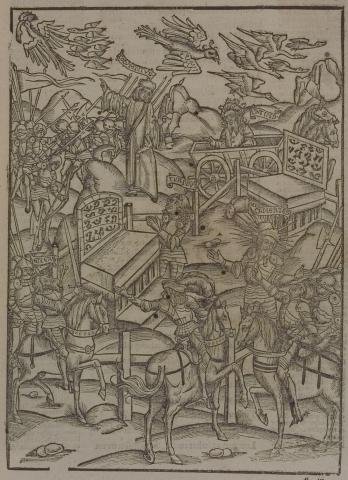
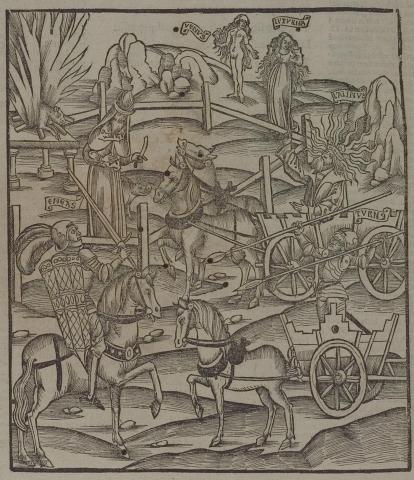
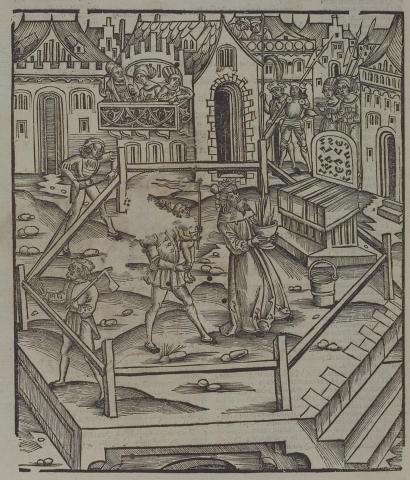
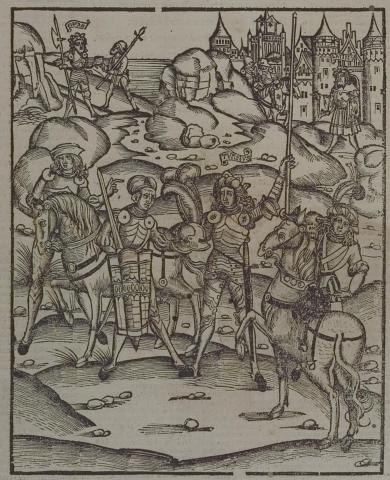

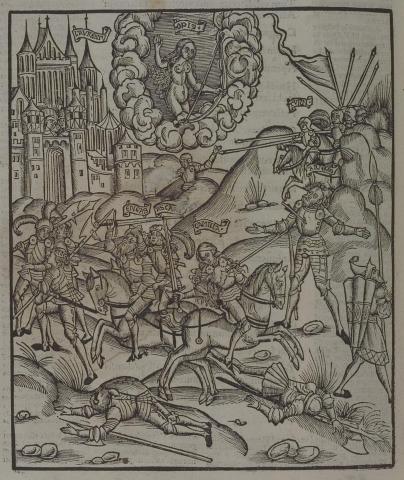
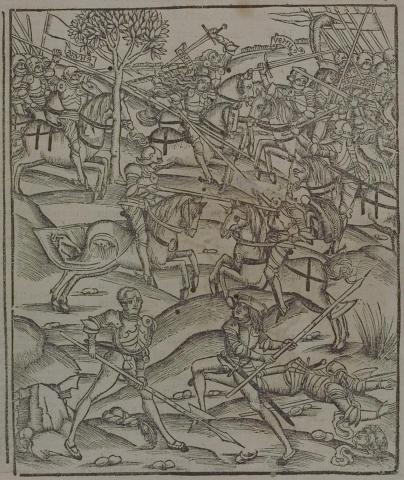
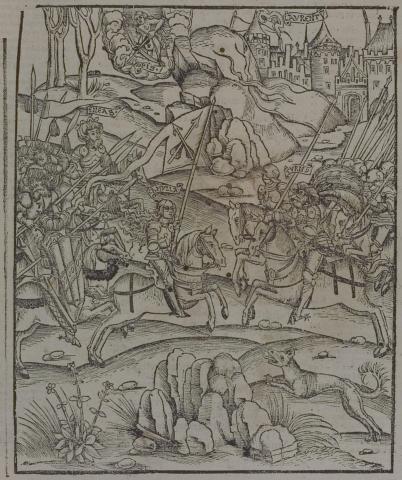
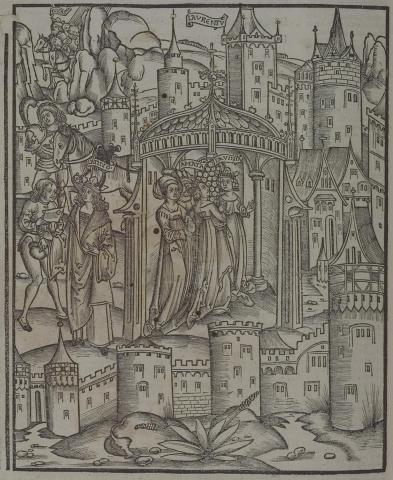

Sebastian Brant (1458-1521) was a humanist scholar of many competencies. Trained in classics and law at the University of Basel, Brant later lectured in jurisprudence there and practiced law in his native city of Strasbourg. While his satirical poem Das Narrenschiff won him considerable standing as a writer, his role in the transmission of Virgil to the Renaissance was at least as important. In 1502 he and Strasbourg printer Johannes Grüninger produced a major edition of Virgil’s works, along with Donatus’ Life and the commentaries of Servius, Landino, and Calderini, with more than two hundred woodcut illustrations. (Annabel Patterson)